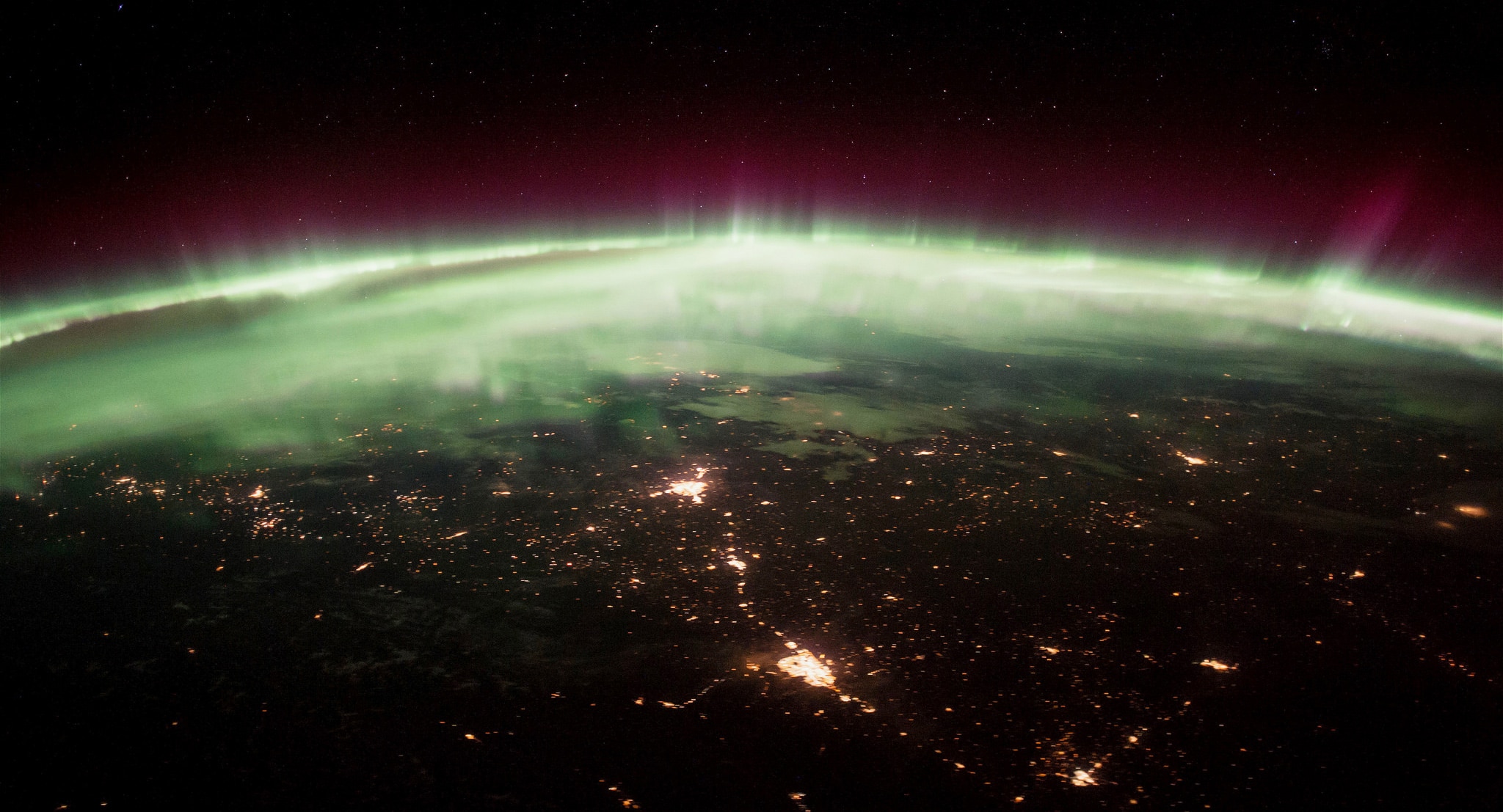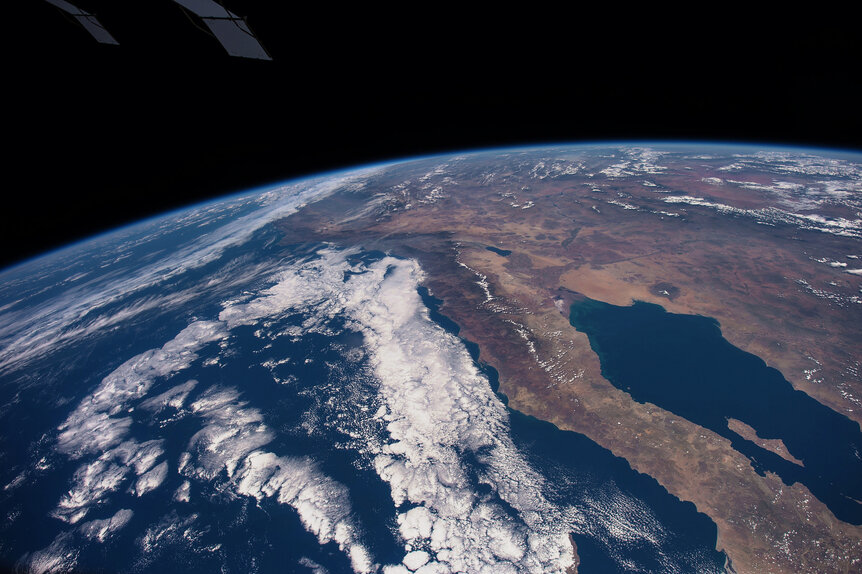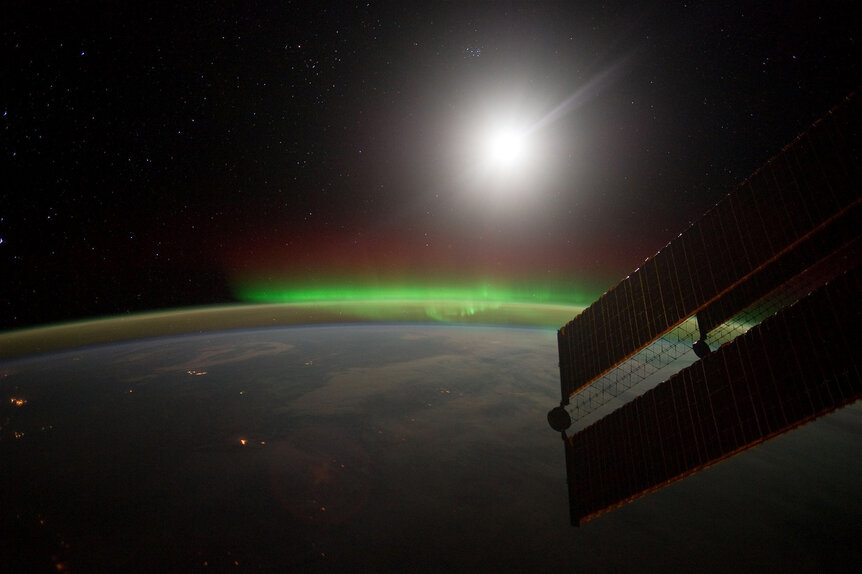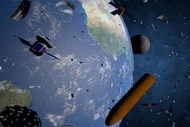Create a free profile to get unlimited access to exclusive videos, sweepstakes, and more!
'Orbit': A video trip around the Earth... in real time!

If you know the name Seán Doran it may be due to his amazing photographic processing skills, especially his jaw-dropping work with the Juno spacecraft images of Jupiter.
But he's actually pretty eclectic, working with images from Mars rovers, solar satellites, Earth-observing satellites, and more.
These are all uncrewed missions, trips to space — near and deep — populated only by machines. But Doran's latest work is far more human. He used photographs taken aboard the International Space Station and created a video that is both clever and beautiful: "Orbit", a real-time animation showing what it's like to experience a single circuit of the Earth aboard the ISS.
And by real-time, I mean it: While it's composed of different scenes showing different pieces of different orbits, the entire run time is 92 minutes and 39 seconds: The time it takes for ISS to make one complete orbit*.
Set this to the highest resolution possible, fire it up, sit back, and enjoy [and if you have a good internet connection, here's a 4K version that'll fill your eyeballs and brain to their limit]:
Oh, yeah.
I'll note this is not a time-lapse! It's shown real-time. Doran took images that were shot one per second, then used mathematical interpolation to create the frames in between, making for a smooth ride over our planet.
As I watched, I was constantly awestruck by the overwhelming beauty of our planet. The colors, textures, geometry, shadows, light play, contrasts… they all make for a view filled with wonder.
Punctuating that awe was a recurring odd sensation. I'd be seeing some unfamiliar landscape (or seascape), wondering where in the 500 million square kilometers of planet I was, and then slowly a familiar landmark would slide into view, taking me from confusion to revelation in a matter of five or six seconds. My favorite time that happened was at about the 08:25 mark, as a cerulean blue body of water slips by and a stark, brown and tan landscape begins to dominate… and then the iconic V of the Suez and Aqaba gulfs north of the Red Sea rolls by. Seeing this, my weltanschauung (one of my favorite German words; literally "world view") shifted from seeing the Earth as an alien world to one where humans exist, where we are born, where we have struck out and explored. Where we live.
This was repeated at the 1:15:30 mark with even more profundity for me, as the station flew over the Pacific Ocean and Baja California drifts by, with the Sea of Cortez following. I quickly opened up Google maps and tried to follow along as the ISS moved northeastward over the US, looking for landmarks. I did well as it cruised over New Mexico, then lost my bearings for a moment, until the Missouri River flowing through South Dakota, Nebraska, and Iowa came into view. It takes days to drive this territory, but I looked away for a second or two and was hopelessly lost, untethered above solid land. Land I know pretty well… or at least I once thought so.
I could go on — gravity wave clouds striped across the landscape, the aurora flickering and whipping about as the stars of Orion shine above, the Moon near the V-shaped Hyades and Little-Dipper-shaped Pleiades clusters in Taurus setting in an accelerated manner due to the ISS orbital motion, the thin layer of brownish-red airglow eerily hanging over the curve of the Earth's limb, parallel shadows from clouds cast on the oceans which would look like a mighty fan of crepuscular rays emanating from the Sun if you happened to see them from the surface hundreds of kilometers below…
There's too much to ennumerate. So instead, just watch. There's enough that you can watch some, then come back for more later. And when you do, you may see Earth in a new way, obtain a different view of our home from above, both literally and metaphorically. Seeing the planet from above is more than just beautiful. It shakes up our complacency and forces us to take on a new perspective.
Space exploration is disorienting. This may be its most deeply felt and most important aspect. We can't know our home truly until we leave it.
* In reality, the length of time it takes the ISS to orbit the Earth changes all the time. It's up above very nearly all the atmosphere, but there is still a wee bit of drag from the molecules that are there. This steals energy from the station, dropping its orbit, which in turn speeds up the orbital velocity and decreases the orbital time. Periodic reboosts lift up the station and slow the period, so the average orbit is roughly 90 minutes. Doran used Wikipedia to get the orbital period, which used the data from July 2017.
















